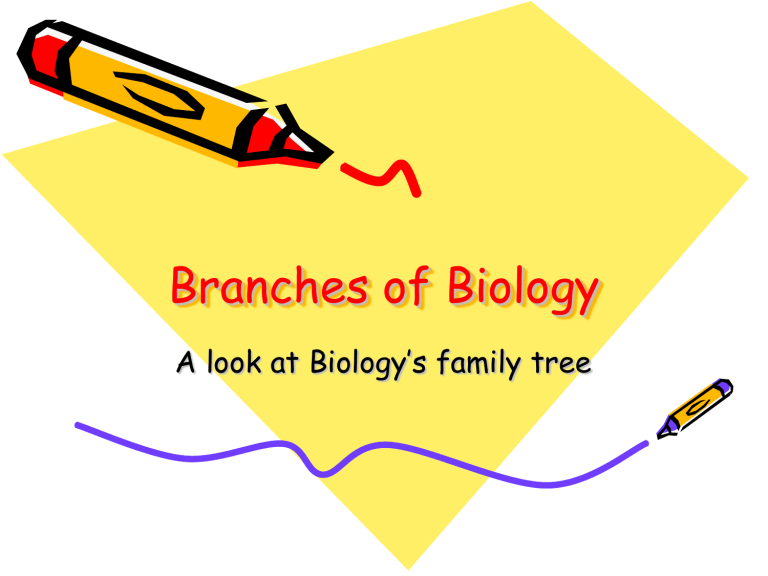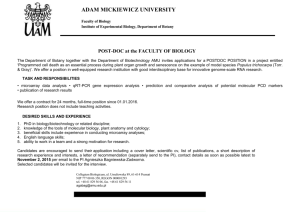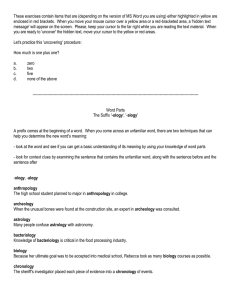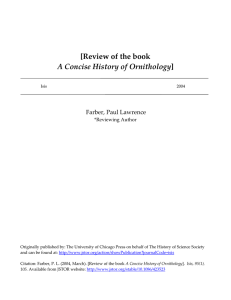Branches of Biology

Branches of Biology
A look at Biology’s family tree
Do you know?
Biology started branching out and until now, its family tree just keeps on growing!
Are you familiar with any of the family members?
1. Paleontology 7. Entomology
2. Genetics 8. Phycology
3. Ecology 9. Cytology
4. Zoology 10. Ornithology
5. Botany 11. Physiology
6. Pathology 12. Herpetology
13. Morphology
Do you know?
The names of the different branches of Biology have Greek or
Latin origins.
Example:
Bio (living organisms) + logus (study of)
Biology = study of living organism
Try it!
In your notebook:
1. Create 3 columns.
Branch Origin Meaning
Check out the Greek/Latin origins below
• Logus – study of
• Genetikos – origin
• Botanikos – of herbs
• Oikos – habitat
• Cyto - cell
• Palaios – ancient
• Morphos - shape
• Ornith – bird
• Zoion – animal
• Physis – nature
• Pathos – suffering
• Herpeto – reptile
• Entomon – insect
• Phyco – seaweed/algae
See if you got them right…
1. Paleontology – study of fossils
2. Genetics – study of heredity
3. Ecology – study of ecosystem
4. Zoology – study of animals
5. Botany – study of plants
6. Pathology – study of diseases
See if you got them right…
7. Entomology – study of insects
8. Phycology – study of algae
9. Cytology – study of cells
10. Ornithology – study of birds
11. Physiology – study of the normal functions of the body
12. Herpetology – study of reptiles
13. Morphology – study of forms and structures of living organisms
Assignment:
1. Research and add 5 more to the branches of
Biology. Include its etymology and their descriptions. (individual)
2. Bring a picture of the lab group’s assigned animal and research about it. Note: The group’s grade depends on the output of each group members.
3. Bring also: cartolina, construction papers, glue/paste, scissors, art materials, markers
4. Have your quizzes signed by your parents.







